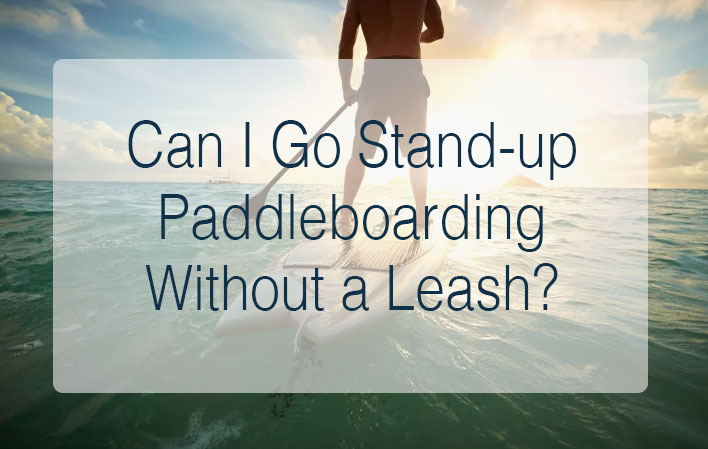Stand-up paddleboarding (SUP) is a popular water sport that offers a unique blend of relaxation and adventure. Whether you’re cruising on serene lakes or riding challenging waves in the ocean, safety should always be a top priority. One important safety accessory in the world of SUP is the leash. But the question arises, can you go stand-up paddleboarding without a leash? In this article, we’ll explore the importance of SUP leashes, when you might consider going without one, and the potential risks involved.
What is a SUP Leash?
A SUP leash, short for “stand-up paddleboard leash,” is a vital safety accessory that connects you to your paddleboard. It typically consists of a coiled or straight cord that attaches to your ankle or calf on one end and to a plug or attachment point on the board on the other end. The primary purpose of a leash is to prevent your board from drifting away if you fall or lose balance.
The Importance of a SUP Leash
The importance of wearing a SUP leash cannot be overstated. Through my trial and error I discovered that some key reasons why you should consider it an essential part of your paddleboarding gear:
- Safety: The most critical role of a leash is to keep you connected to your board. In case you fall off, especially in challenging conditions or strong currents, having your board within reach can be a lifesaver.
- Avoid Collisions: A leash helps prevent your board from becoming an uncontrolled object in the water, potentially colliding with other paddlers, swimmers, or even boats.
- Convenience: It’s much easier to retrieve a board attached to you by a leash than to swim after it, especially if you’re in deep or fast-moving water.
- Respect for the Environment: Leashes prevent runaway boards from becoming marine litter, which is both unsightly and harmful to the environment.
- Efficiency: When you’re connected to your board, you can more efficiently climb back onto it after falling, which is especially valuable in challenging conditions.
When Might You Go Without a Leash?
While a SUP leash is generally considered essential for safety, there are situations where you might consider going without one:
- Whitewater SUP: In fast-moving rivers with Class III or higher rapids, some whitewater SUP enthusiasts choose not to wear leashes. The rationale is that in turbulent water, a leash can get snagged on obstacles, creating a safety hazard.
- Surfing: As indicated by my tests, some experienced surf SUP riders opt to go without a leash. This choice is based on the idea that losing the board during a wipeout can reduce the risk of injury to both the rider and others in the surf zone.
- Downwinding: In downwind conditions where you’re riding waves created by wind and swell, not wearing a leash might be preferred by some paddlers who believe that it provides more freedom and reduces the risk of being pulled underwater by a leash.
It’s crucial to note that going without a leash in these situations is a decision for experienced paddlers who are confident in their skills and aware of the potential risks.
Risks of Paddleboarding Without a Leash
While there are situations where not wearing a leash may seem practical, it’s important to acknowledge the associated risks:
- Loss of Control: Without a leash, you may lose control of your board in unexpected circumstances, making it difficult or even impossible to retrieve it.
- Safety Hazards: A runaway board can pose a threat to other water users, including swimmers, surfers, and boaters, potentially leading to accidents or injuries.
- Difficulty in Reentry: Climbing back onto an unattached board can be challenging, especially in challenging conditions or open water.
- Environmental Impact: A lost board can become marine litter, contributing to pollution and harming the environment.
Leash Types and How to Choose One
When selecting a SUP leash, consider factors such as board length, your skill level, and the intended use of your board. Here are some common types of SUP leashes:
| Leash Type | Description | Ideal Use |
|---|---|---|
| Coiled Leash | Stretches when extended and retracts when not in use. | All-around paddling, calm water conditions. |
| Straight Leash | A straight, non-coiled design. | Surfing, river paddling, open water. |
| Ankle/Calf | Attaches either to your ankle or calf. | Personal preference, usually ankle for iSUP. |
| Quick-Release | Leashes with a quick-release mechanism for safety. | Whitewater or situations with potential entanglement risks. |
My findings show that when choosing a leash, match its length to the size of your board. A general guideline is to use a leash that’s roughly the same length as your board or slightly longer. For example, if you have a 10-foot board, a 9- to 10-foot leash should suffice.
Conclusion
In most stand-up paddleboarding scenarios, wearing a leash is a crucial safety measure that significantly reduces the risk of accidents and ensures the safety of both the paddler and others in the water. While there are situations where experienced paddlers might choose not to wear a leash, these cases are exceptions, and they should fully understand and accept the associated risks.
Ultimately, the decision of whether or not to go stand-up paddleboarding without a leash should prioritize safety and environmental responsibility. Regardless of your choice, always be aware of your skill level, the conditions you’re paddling in, and the potential consequences of your decision. In the vast majority of cases, a leash is a simple yet effective tool that enhances safety and peace of mind during your SUP adventures.
Thesandshore.com is a source where the post Can I Go Stand-up Paddleboarding Without a Leash appeared first.


